< more recent | 1-7 October 2022 | older >
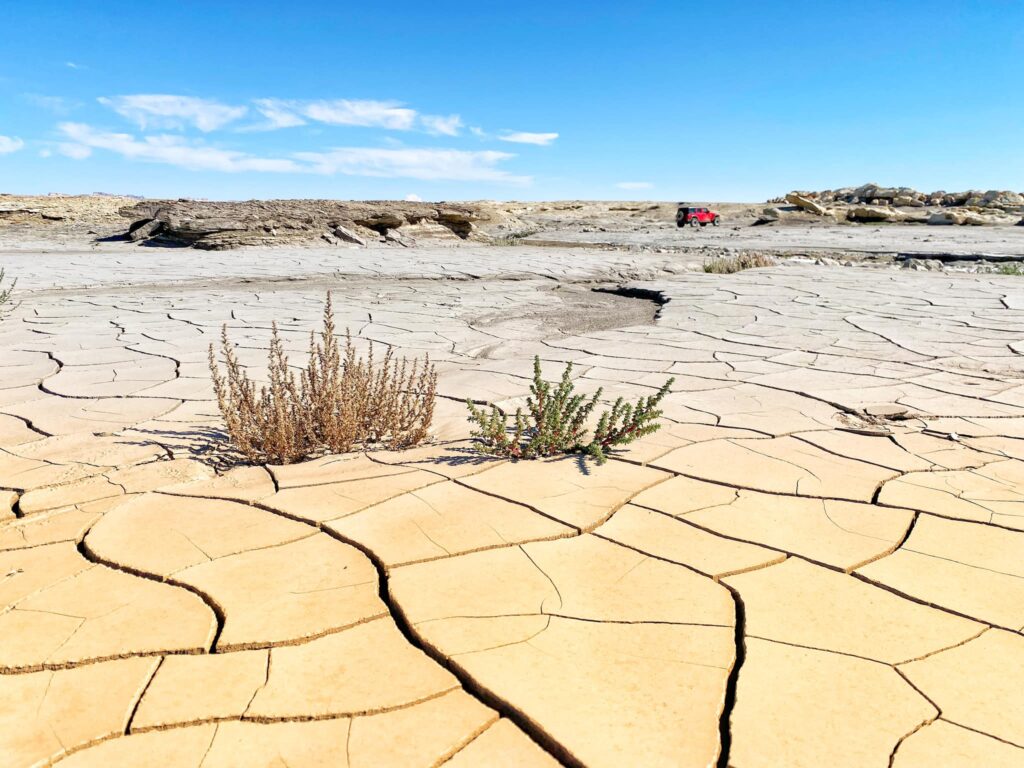
7 October 2022: Took time out to resupply and deal with some administrative details before leaving Price and making my way closer towards Moab before detouring into the San Rafael Swell for a few days of calm relaxed camping before going on to my Moab-based event. I set up camp in the Temple Mountain Wash, and was not pleased to see that the paved road had been extended and my favorite camp site had trash and graffiti on the rocks. The free BLM-campground on the corner of Temple Mountain Road was packed like a parking lot with RVs and I saw that they will soon be charging a fee. I fear the next step will be to remove our rights to dispersed camping in the area, so this may end up being my last time in this incredibly beautiful location…
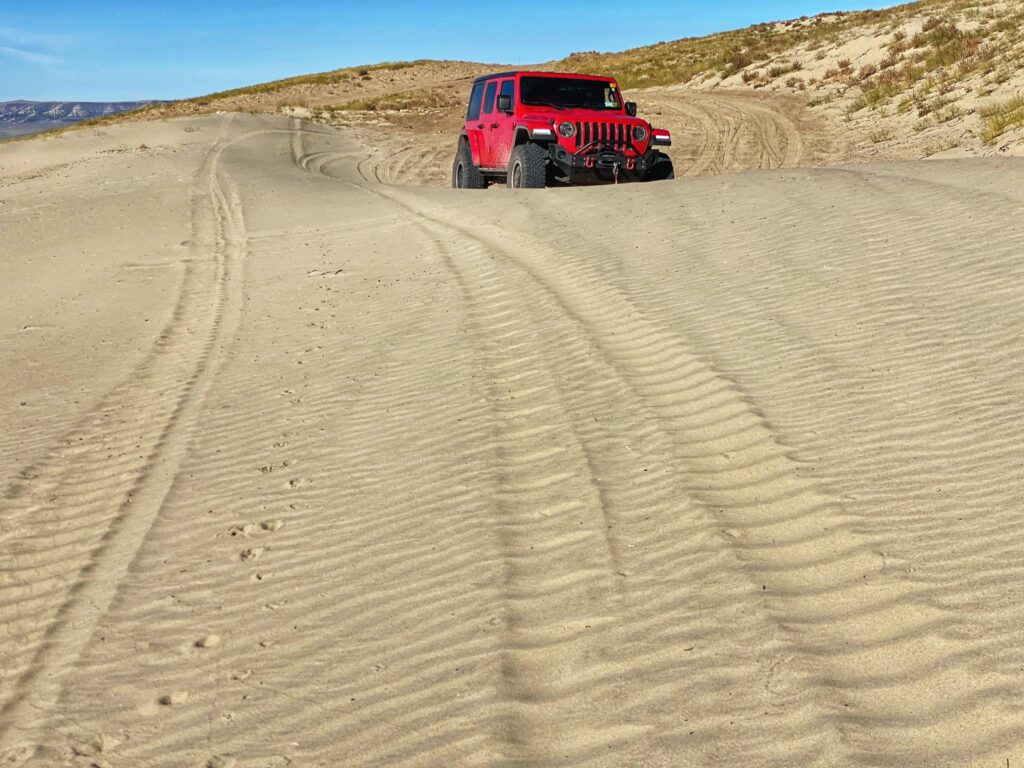
6 October 2022: Checked out the Killpecker Sand Dunes early in the morning and was the only one there. Then I decided to pick up the loop that went back around to the pioneer trails west, and it turned out to be a great decision because the route was incredibly beautiful and a really interesting drive that went up on top of the mesa as well as down into the depths of the basin and in between some beautiful badlands. Best of all were the animal encounters, herds of antelope, some more wild horses and most exciting of all was a huge herd of elk, which I would not have expected to find in a desert. I finished the loop in late afternoon and had run out of time to go check out another ghost town, as I needed to head south into Utah and get as far as Price UT before stopping for the night …
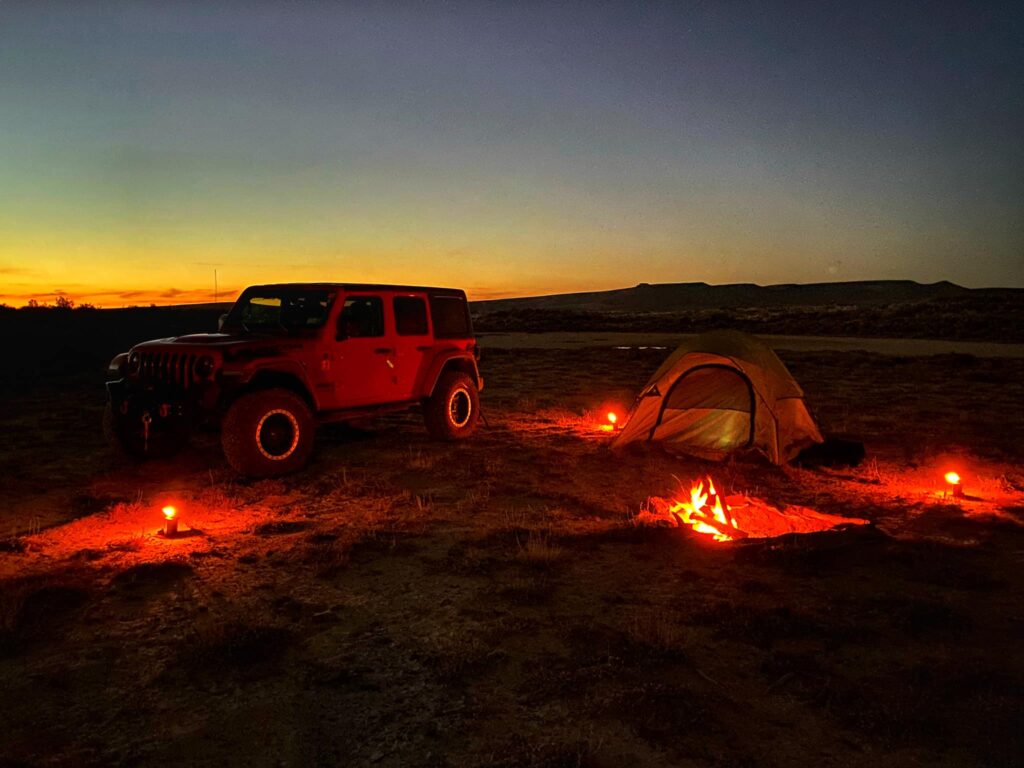
5 October 2022: I continued my scouting exploration around the Red Desert today, looking for specific sites and ruins of historical structures around the area and had an interesting encounter in the town of Superior before heading deeper into the backcountry where I had some pleasant surprises with more wild horses before making my way to the Boar’s Tusk. I had made so many stops and detours during the day that it was nearing sunset when I finished at Boar’s Tusk and I needed to find a place to set up my dispersed campsite quickly. The disadvantage of not knowing an area well and then needing to find a camp spot quickly is that you take the first “decent” spot you see, and that is what I did, setting up off a spur not far from the Tusk. But it turned out to be a nice spot for the night and I could hear the coyotes howling as I made my campfire and settled in for the night…
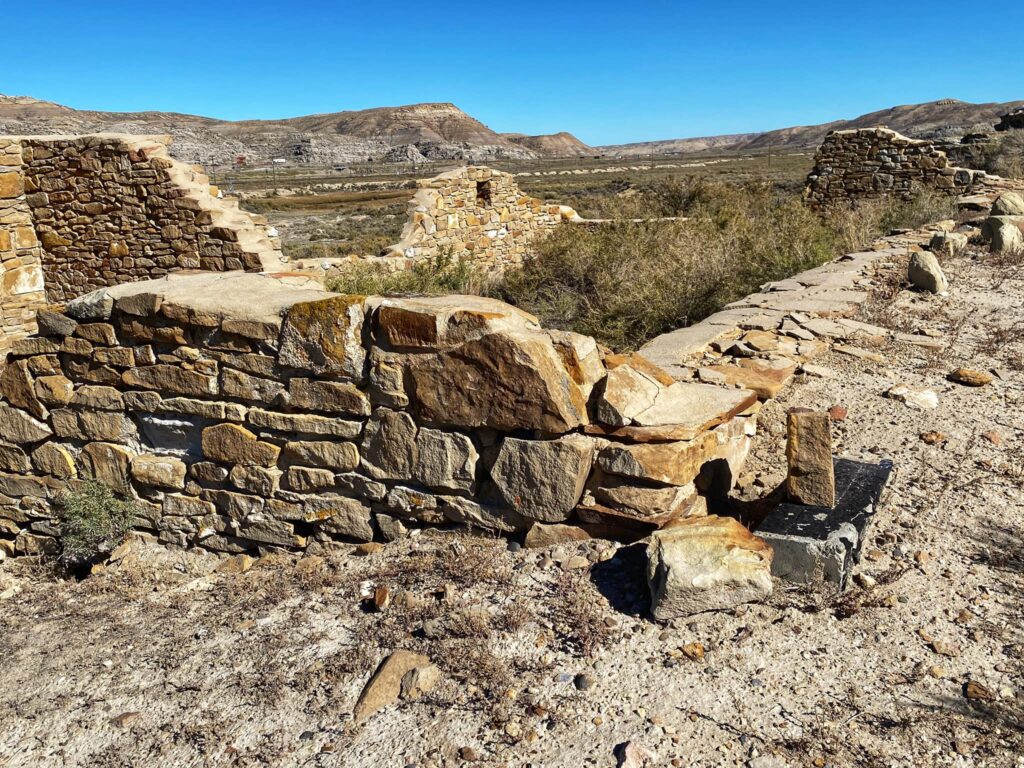
4 October 2022: Broke camp, packed up the Jeep and headed for the desert today, leaving the higher elevations and cold air behind. Picked up HWY 191 heading south through a quite remote stretch of immense and seemingly empty landscapes — “empty” in the sense that there were no buildings or signs of “civilization” and “development,” just unspoiled nature. Pronghorn antelopes were everywhere in vast herds the size of which I had never seen before. I imagined what it must have been like before the coming of european settlers. And then I found the wagon ruts. There are places in this part of Wyoming where the earth itself bears witness to the multitude of pioneers who crossed this land on their journeys west. And the sites of some of the old trails have been preserved. We can literally see their tracks (which actually look like Jeep trails, but with the wheel ruts much closer together, and honestly I wondered to myself if these were really preserved pioneer ruts or more recent 4×4 trails that went over the same area). I detoured to check out a few of the key locations and really imagine what it might have been like for them making their journeys to start a “new life.” I made it into the Red Desert area and continued south to Pilot Butte to look for the wild horses near Rock Springs, eventually finding a few near the end of the scenic loop road…
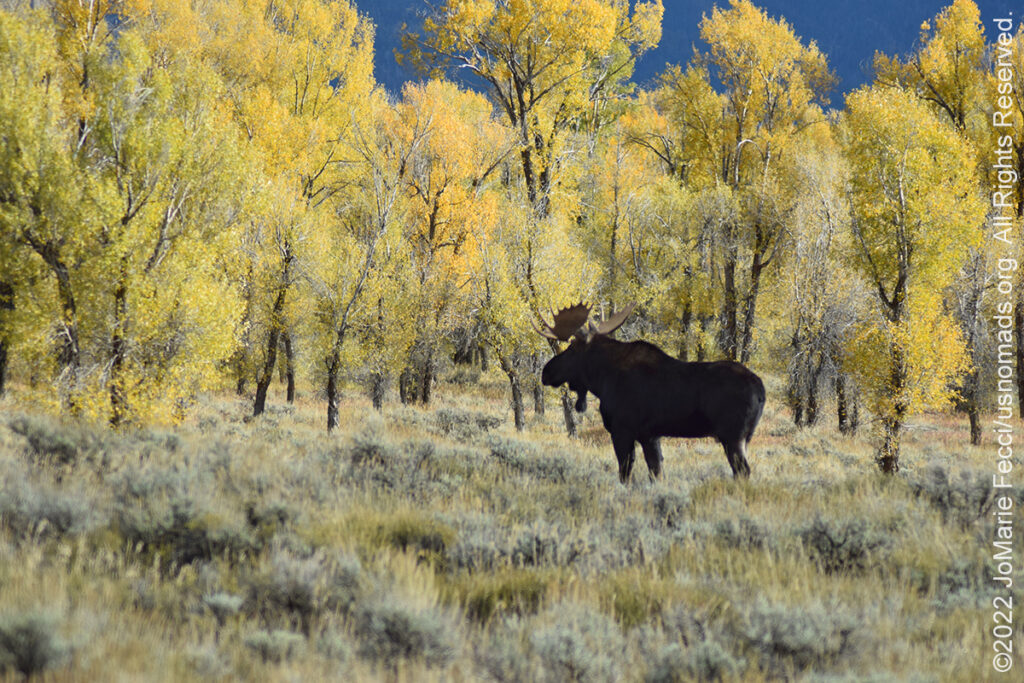
3 October 2022: Up early before the sun, and out driving the length of the park heading north. Today we can see the mountains and there was a beautiful sunrise and the light is just magnificent. It is like a completely different place. Was still hoping to find the moose. Made photo stops at almost all the overlooks and went walking down into the brush in a few places following hiking trails I thought might bring me to a better place for animal encounters. Incredibly beautiful day in a place where everything looks like a postcard. After a full day out searching for moose I was ready to give up, knowing I am leaving tomorrow morning for the desert and there wouldn’t be any moose there. As I was reaching the turnoff for Gros Ventre road, I saw a crowd of people and parked vehicles, which I’ve learned tends to mean there is an animal somewhere, and I thought it was a big black bear on a distant ridge — too far away for me to make a usable photo, but right before I turned I noticed that it wasn’t moving like a bear. I wasn’t sure what it was, now thinking maybe an elk, but it was going in the direction I was, so I decided to drive up ahead and stop and see if it got close enough for a decent image. I started shooting off frames as soon as it came into view over the ridge, even though it didn’t quite look like an elk either. As it got closer I got more excited, wondering if it was just my hopeful imagination or???? Suddenly I could recognize the shape of the antlers and it was clearly and definitely a moose! I managed to get a few photos before he disappeared into the woods, and I was elated. I had found “my” moose afterall…
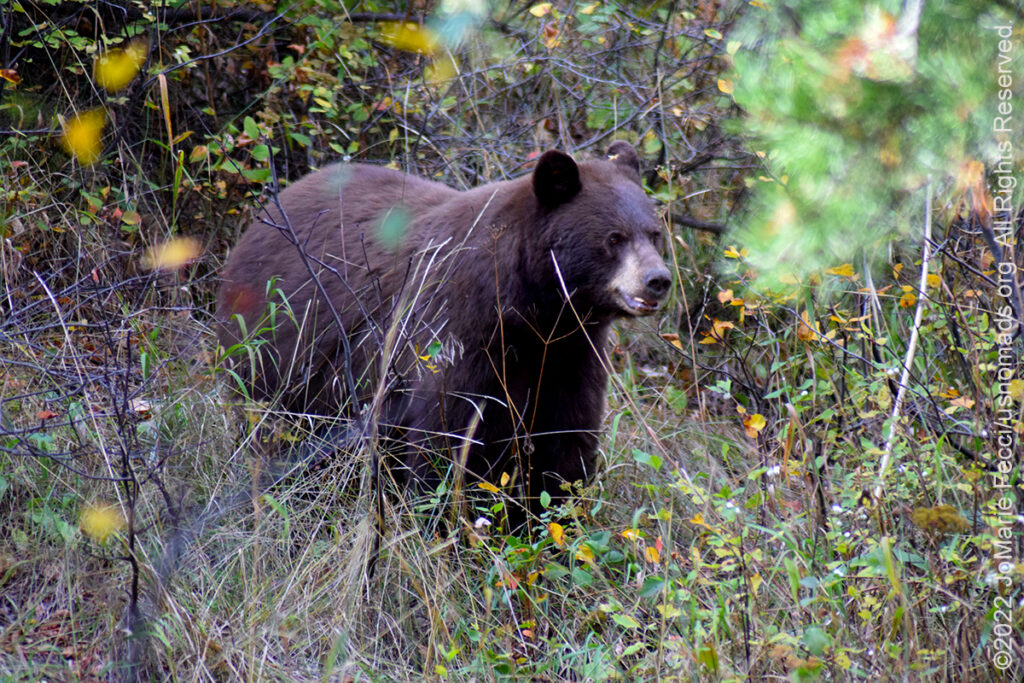
2 October 2022: It was still wet out when I woke up but it was not actively raining, so I took my time to break camp and get the big tent packed up properly, then I headed south to Grand Teton. The drive was not as beautiful as it could be because of the low clouds that completely obscured the mountains, but it was still interesting. I set up camp at Gros Ventre campground, then went out to look for moose — the one animal I have not seen on this trip (and have kind of been searching for since the summer roadtrip in Vermont, New Hampshire and Maine, where it should have been easy to find one). There are a number of locations here that are supposed to be good for spotting the big fellows and I started out with the one closest to my camp, which is along Moose Wilson Road. There were a lot of other people looking for wildlife, too, and there were park rangers telling people they had to keep moving and couldn’t stop on the road. Of course when ever anyone saw an animal, they stopped to take photos and then every other vehicle did the same. Someone mentioned that there were some bears down the road, and everyone drove towards the bears, and a ranger nearby kept the vehicles moving, but it was slow enough that I could grab a couple of frames of the bear who was grazing on berries in the bushes. I was glad with the bear photo, but did not see any moose around Moose Wilson Road or anywhere else either …
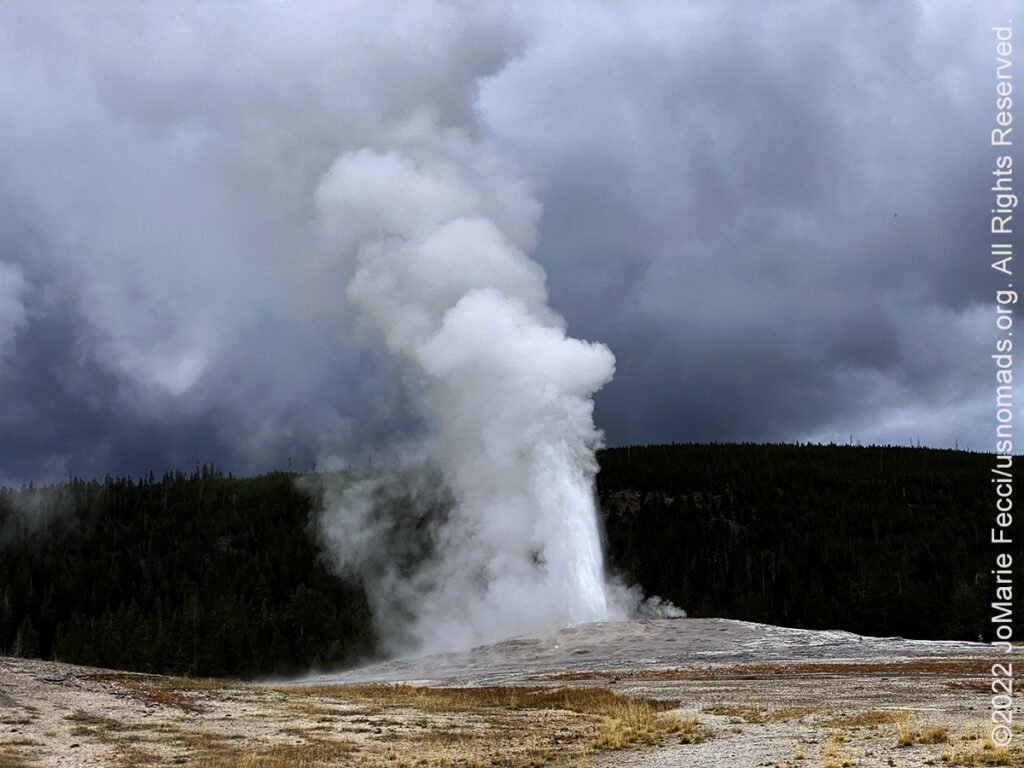
1 October 2022: Cold and rainy day today for the final day in Yellowstone, but I felt a bit obligated to at least go see “Old Faithful,” the most famous feature of the park. Despite the bad weather the site was as crowded as you could imagine and it was so bizarre because of the way this part of the park was really set up like “an attraction” in the Disney-fied sense of the word. I had avoided it as much as I could, but I had to step into it if I wanted to see the iconic water feature. I watched the film in the visitor center first (it was nice and warm and dry in there) and then joined the masses of people surrounding the geyser and waited for it to do it’s thing. Rangers with megaphones gave direction to the crowds and Old Faithful was on time, sending it’s column of water and steam up like a fountain, which would be really cool if you saw it in nature, but in this setting it was kind of like “that’s it?” Another geyser went off about midway during Old Faithful’s “performance” and the opportunity to see the two at the same time was actually unusual. As soon as they were “done” I got out of that area as fast as I could. It was still rainy and cold, but I was determined to use the day, and went to look for wildlife (they were smarter than me and did not come out in the rain), then took a turnoff to check out the “Grand Canyon of Yellowstone, which unfortunately did not look as magnificent as it should because of the overcast skies which eliminated the interplay of light and shadow that typically makes it so dramatic. The rain finally did let up a bit by the time I got back to camp and I was able to make dinner around the fire …
THIS MONTH:

Fall Roadtrip West, heading from NY to Moab, on the slow road. Taking a different route westbound, with lots of interesting stops along the way. The plan is to go via NY, NJ, PA, OH, MI, WI, MN, SD, WY and UT, camping as much as possible and hitting some key destination locations …
COMING UP SOON:

Attending the Ladies Offroad Network Convention in Moab, UT. The 6th annual convention will be held October 12-15, 2022, with lots of hands-on opportunities to gain all types of offroading skills, learn and engage with other offroad ladies as they share their stories, and laugh the whole way. The convention is an action-packed, interactive 4-day weekend educating, motivating, and guiding offroad ladies…

USnomads.org is very proud to be presenting the second edition of the Nomad Overland Virtual Adventure Rally in 2023. This is a new kind of rally experience — a ten week event that participants can do from anywhere within the continental U.S.A. Competitors design their own routes as part of the rally, then drive it in a points-based online competition that includes optional activity tasks, quests and weekly challenges. The 2023 rally will run from 5 June – 13 August and is open to any driver within the United States who has an off-road capable vehicle — stock or modified. Registration for 2023 is open now. For more information see the Rally website …
THE KILLPECKER DUNES
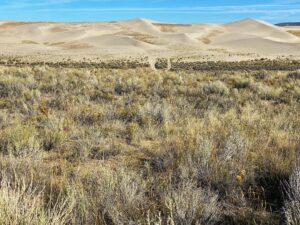
The Killpecker Sand Dunes stretch more than 100 miles, from near Farson to the Ferris Mountains to the east. They are one of the largest “living” sand dune complexes in the United States. The dune field formed here because of the nearby Leucite Hills which are the remains of volcanic flows from Pleistocene age eruptions. The presence of the Leucite Hills created a gap through which the prevailing westerly winds funnel. These winds are strong enough to carry sand and gravel. As the winds blow through the Leucite Hills, the sand collects in large sand dunes, reaching heights of over 100 feet. These shifting dunes contain numerous ephemeral ponds which are formed when sand blows over and insulates snow drifts in the winter, causing pockets of hardened snow that melts out slowly in the spring and summer. The area around the Killpecker Dune Field is the home of a herd of rare Desert Elk. The Desert Elk are found nowhere else in North America. The dune field contains four wilderness study areas and the Killpecker Sand Dunes Open Play Area for motorized recreation and camping. Killpecker Dunes were named after Killpecker Creek, the drainage that flows south from the dunes to Rock Springs. Legend tells of soldiers assigned to protect the Overland Stage station in the 1860’s. After drinking the salty water of the creek, then known as Kilpatrick, they discovered their virility had been compromised. In the long tradition of military humor they renamed it Kill Pecker creek. And so Killpecker it became…
SOUTH PASS & PIONEERS
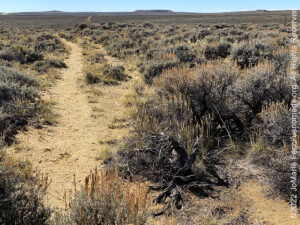
The Red Desert includes sections of the Oregon, California and Mormon Trails as well as the Pony Express mail route between the east and west coasts in the 1860s. On the northern edge of the Red Desert lies South Pass, a 20 mile wide, gently sloping gap in the Rocky Mountains. It opened the West to settlement by providing a route over the Continental Divide that wagons could negotiate and it was perhaps the most important landmark along the emigrant trails. Everyone who followed the Oregon Trail through Wyoming used this sagebrush and grass covered saddle. It marked the end of the long ascent to the Continental Divide and the emigrants’ arrival at the frontier of the Oregon country. It was also thought to be the halfway point along the trail. The pass served as the primary mountain gateway from the east to the west for hundreds of thousands of emigrants in the 1800s. As many as half a million people may have traveled this corridor in the 19th century. The Oregon, California, Mormon Pioneer, and Pony Express National Historic Trails passed through here. A wide and deep path was created as thousands of wagon wheels and livestock hooves steadily eroded the ground. To many, the environments of the Great Plains, Rocky Mountains and Great Basin seemed like another planet, full of strange and alien landscapes. Mountain men exploring the Rockies first set foot in the Red Desert in 1812, and except for a few roads and the loss of bison herds, the landscape looks very similar today to what it looked like then. The Red Desert is a focal point where many of the emigrant trails diverse. The Oregon, Mormon Pioneer and California trails all cross Wyoming in the central and most popular corridor of this migration. The trails followed the North Platte and Sweetwater rivers west to South Pass, after which they divided into various routes bound further west. Emigration routes were scouted by trappers, traders, the military and early pioneers in the 1810s-1840s. As the West was settled, destinations multiplied, necessitating a complex network of routes. Emigrants sought out alternative routes as the immense traffic on the main routes strained natural resources of the fragile steppes and desert. Isolated wagon tracks across the West quickly grew into a far-reaching capillary system. Today, visitors to the area can still see the network of rutted-out wagon trails from the thousands of settlers who traversed this landscape. South Pass National Historic Landmark, which is managed by the Bureau of Land Management, preserves these still visible ruts. Amenities are scarce; only a few monuments and signs mark the South Pass crossing. Roads in the landmark are all unpaved, but the main ones are maintained, gravel roads suitable for most vehicles when dry…
THE RED DESERT
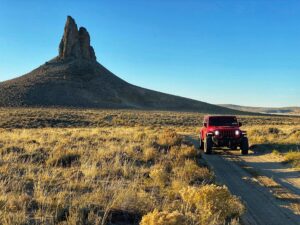
Wyoming’s Red Desert is one of the last great high-elevation deserts left in the United States. Here time, wind and water have carved out colorful badlands, sandstone towers, deep canyons and shifting sand dunes. As an ancient inland sea, traces of long-extinct animals erode from deep beneath the fossil bed. This is the only place where the Continental Divide splits and rejoins, forming an enormous basin where water collects rather than flowing into the Pacific or Atlantic oceans. The world’s largest herd of desert elk can be found here, along with wagon ruts etched by pioneers traveling the Oregon Trail, and prehistoric rock art and Shoshone spiritual sites. In its entirety, the Red Desert stretches across a vast swath of southwestern Wyoming and beyond — from the ghost town of South Pass City up north it spills south, east and west, past the Utah and Colorado borders. A wildly varying landscape unfolds across it, aspen-fringed mountains giving way to otherworldly badlands, stark sand dunes pouring into endless sagebrush seas. Though its precise boundaries vary depending on who you talk to, many tout the roughly 6-million-acre patchwork of federal, state and private lands as America’s largest unfenced area. The heart of the Red Desert is the Great Divide Basin. The Northern Red Desert claims the northwestern corner of the Great Divide Basin and is roughly bounded by South Pass, the Jack Morrow Hills, White Mountain, Leucite Hills, Lost Creek Basin, and the Sweetwater River. The Northern Red Desert’s human history is complex and spans thousands of years. There are those who have traveled across the desert and those who called its open spaces “home.” Paleoindian groups lived in the area as early as 12,000 years ago, beginning at the end of the last ice age. As the climate changed, so did people’s patterns in the Desert—pit houses found across the desert are indications of successful adaptations to a changing environment. The American Indian tribes we know today lived in and passed through the Northern Red Desert, hunting buffalo and other big game, and gathering a rich array of wild plant foods. There are countless campsites, rock art areas, and sacred places in the Desert—some are known and managed by the Bureau of Land Management. Other places are protected by remaining known only to the tribal members who safeguard the stories and spiritual histories of this area…
MORE NOTES FROM THE ROAD:
22-30 September – Roadtrip West
16-21 September – Roadtrip West
1-15 September – Long Island
August – Long Island
15-31 July – Serbia
1-14 July – NE Roadtrip
16-30 June – NE Roadtrip
1-15 June – Long Island
May – Nomad Rally Prep
16-30 April – Long Island
7-15 April – Heading Back to NY
1-6 April – Heading Back to NY
27-31 March – Death Valley- DVE
21-26 March – LON Skills Camp
15-20 March – Death Valley
8-14 March – Nevada
1-7 March – Glamis Training
16-28 February – Roadtrip Southwest
1-15 February – Long Island
8-31 January – Long Island
1-7 January – Florida to NY
28-31 December – Okefenokee NWR
24-27 December – Ocala National Forest
19-23 December – Heading South
10-18 December – Long Island
1-9 December – Paris
16-30 November – Paris
1-15 November – Roadtrip East
25-31 October – Roadtrip East
17-24 October – LON Top Ten
7-16 October – Rebelle Rally
1-6 October – Rebelle Training
Archive
SPECIAL REPORT
All about exploring ghost towns and abandoned places in the USA and beyond, with tips, and information on the many different types of sites to be found across the globe, including detailed guides for eight specific sites… [read]
RE-OPENING
Report from the first trail run with the Off Road Consulting group at Rausch Creek Off Road Park as the post-pandemic phased re-openings begin in Pennsylvania and some of our favorite local trails re-open to the public after the two-month shutdown… [read]
REFLECTIONS
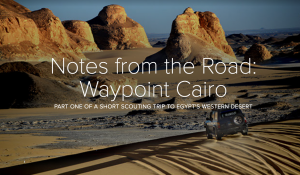
EGYPT: CAIRO REFLECTIONS
A quick overview of impressions from a stop in Cairo during our recent scouting mission in Egypt and Sudan … [read]
SPECIAL REPORT
A look into south-eastern Algeria on the border with Libya and Niger: overlanding with the Tuareg in one of the most remote corners of the Sahara … [read]